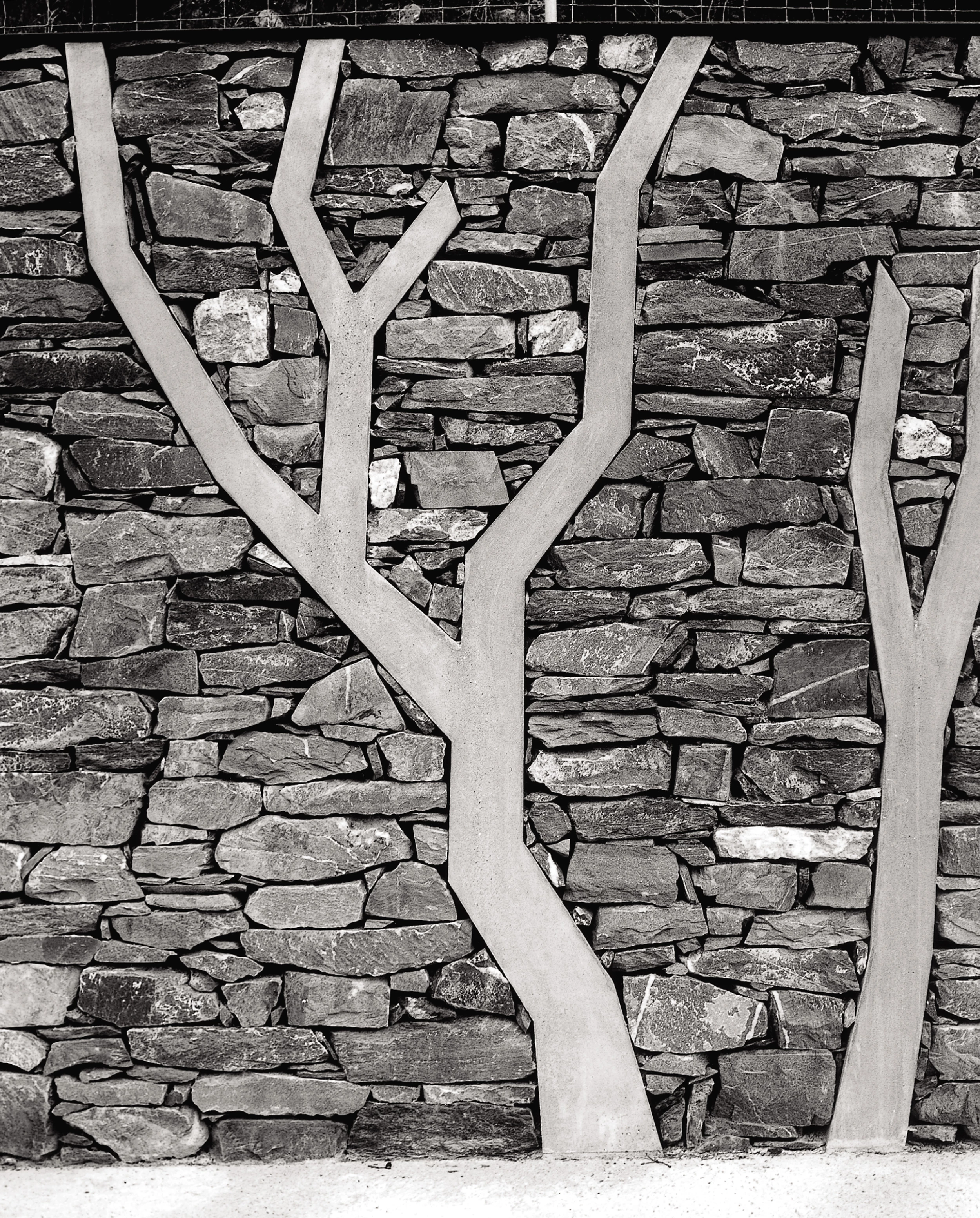Cemetery, Fürstenwald
Kienast Vogt- Type Religious / Memorial Place of worship
- Material Concrete Stone
- City Fürstenwald
- Country Switzerland
- Photograph Christian Vogt
The cementery of Fürstenwald by no means intends to become a monument in memory of the dead, it simply wishes to be a place where human beings end their life cycle and return to nature, and where those related to the deceased may learn to come to terms with their loss. On the outskirts of the city of Chur, the cemetery stands on a privileged spot looking onto the Rhine River and the tops of the Alps, taking its position at the middle of the hillside as a starting point to offer a place for contemplation that sees the landscape as a source of peace for those seeking comfort.
To reduce the plot’s unevenness and make the hillside transitable, a retaining wall draws in consecutive shifts the edges of the cemetery towards the valley, separating the sacred premises from the surrounding prairies. The entrance gate, the chapel, the morgue and a belvedere are attached to the wall, reinforcing their role as backbone of the unit. The cemetery is thereby set forth as a process of immersion into nature, from an itinerary that starts at the bus stop with a hedge that guides the visitors towards the entrance. The concrete gate signaling the entrance – made with a formwork covered by pine tree spicules – expresses the comparison of natural chaos and built order that links all the episodes of the cemetery. From the gate one can make out the main plaza formed by a chapel and the morgue around four lime trees. A second wall retains the plot on the upper part of the cemetery, defining the boundaries of the terrain towards the forest with a structure of niches for funerary urns. The grid of sheets that close the urn openings alternates with the walls on which log-shaped slabs are sunken into the irregular texure of the stone masonry wall.
But it is the vegetation that is responsible for the spatial configuration of the cemetery. Superposed to the basic order of the tombs that follow the curves of the topography are a series of rows of trees following the slope that with time shall end up merging the cemetery with the neighboring forest. The white or purple flowers of the lilac bushes give a discrete touch of color. With the purpose of setting the fields of tombs apart, a sequence of privet, beech and lime hedges underscore the undulating geometry of the terrain. This same layout is repeated by the terrace fit out on the cemetery’s lower limit which rounds off in the belvedere under a concrete pergola, summing up the project’s purposes as a place to meditate while contemplating nature...[+]
Cliente Client
Stadtgemeinde Chur
Arquitectos Architects
Dieter Kienast, Christian Vogt (paisajistas landscape architects)
Colaboradores Collaborators
U. Zunsli, F. Eberhard (arquitectos architects)
Fotos Photos
Christian Vogt







